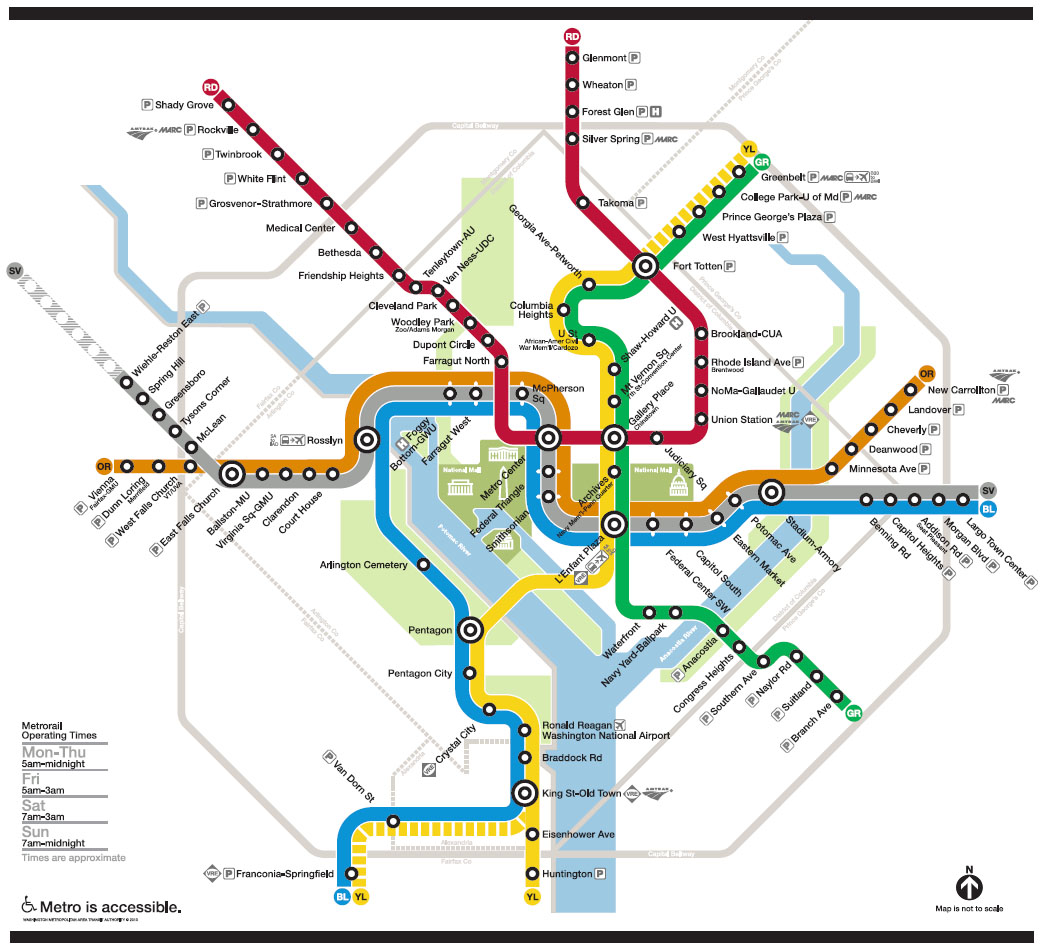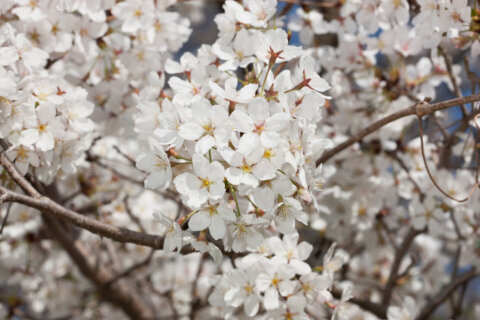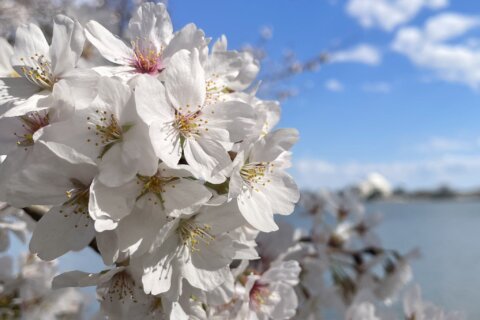Some transit services in D.C., Maryland and Virginia are making significant changes to their schedules and have stepped up cleaning efforts in response to the new coronavirus.
Find out the status if you plan to take public transportation.
Metrorail
Before the coronavirus outbreak in the D.C. area, National Cherry Blossom Festival President Diana Mayhew recommended taking Metro to see the blooms. But Metro and other transit agencies have reduced service in response to the COVID-19 pandemic.
On March 20, Metro announced that it is closing Arlington National Cemetery and Smithsonian Metro stations, and it urged riders to take the system only for essential trips.

Driving there (and parking)
If you’re planning to make the drive in yourself, expect traffic around the Tidal Basin to become heavier and heavier as the trees reach peak bloom.
The roads around the Tidal Basin — Independence Avenue Southwest and Maine Avenue Southwest — may be scenic park roads, but they are also busy commuter routes that drivers use to get from Rock Creek Parkway to the Southwest Freeway.
When visitor and commuter traffic combine, traffic often slows to a crawl on these routes.
That congestion is often compounded by “diginecking,” as tourists take photos out of the windows of slow-moving vehicles. Curbside drop-offs by ride-hailing and taxi services further slow the pace. All of these little stops add up when traffic is heavy.
As for parking, organizers encourage you to book your spot through SpotHero, especially if you’re looking to drive in for the parade. Parking for people with disabilities is also available on West Basin Drive at the FDR Memorial, and on southbound Ohio Drive Southwest on the Washington Boundary Channel side of Hains Point, north of the intersection with Buckeye Drive Southwest.
Parking anywhere near the Tidal Basin and Hains Point is at a premium during cherry blossom season. The areas off Ohio Drive Southwest in West Potomac Park will be full most days around peak bloom. The paddle boat parking lot off Maine Avenue Southwest will likely close for National Park Service staff, so don’t expect to park there during the height of the festival.
DC Circulator bus
The Circulator’s National Mall bus route hits most of the major National Mall landmarks, including the Lincoln Memorial and U.S. Capitol.
It costs a dollar to ride, but with a SmarTrip card, you can get on and off the bus as much as you want during any two-hour time period. Buses are scheduled to arrive every 10 minutes.
Check out the full DC Circulator system map.
Taxi and car services
There will probably be plenty of taxis in downtown D.C. that you can hail directly off the street.
Ride-hailing companies such as Uber and Lyft operate in D.C. and are additional options for downtown travelers. You can find a list of registered digital dispatch services in D.C. here.
Bicycle and scooters
The Capital BikeShare program offers some 4,300 bicycles at approximately 500 stations throughout the D.C. region. Check a bike out at one station and return it to any station near your final destination. The Capital BikeShare station map shows you where you can find available bikes.
The cost is $2 for any trip under 30 minutes and unlimited sub-30 minute trips for $8 per day. A 3-day pass costs $17. You can find more information about pricing and signing up on the Capital BikeShare website.
Several dockless (i.e. free-standing) scooter services have brought their fleet to the area as well: Jump DC, Lyft, Skip and Spin. Download an app, set up your payment info, and you’re good to go.
Boat cruises
If you really want to beat the crowds on the streets near the Tidal Basin, you could get a view of the cherry blossoms from the Potomac and Anacostia rivers and the Washington Channel instead.
Several cruises and water taxi services are available in the spring.
DC Cruises start their public tours (with cherry blossom and monument tours) on March 21. Prices are $25 for adults, $12 for children ages 3 to 16, and $22 for students, seniors and government employees. Discount prices are available. Tickets go on sale on March 1.
Potomac Riverboat Company has sightseeing cruises that give you an on-the-water views of the blossoms. You can catch a boat ride from locations in D.C., Maryland or Virginia. Round trip prices start at $21.
And if shuffling in the crowd and taking quick shot of a perfectly pink bloom before the masses converge is not your speed, you can rent a pedal boat and leisurely pedal on the Tidal Basin. Rates start at $20 per hour. Check Boating in DC’s website for start of service.
The Wharf
The Wharf has over 500 underground parking spaces for bicycles. The Wharf Jitney operates between the District Wharf pier and East Potomac Park-Hains Point.
The small, electric-powered ferry is free, pet- and bike-friendly, runs twice an hour and makes the trip in about three minutes.
In addition, you can rent kayaks, canoes and paddleboards. Rates range from $20 to $55 for a whole day
The Potomac Riverboat Company also provides water taxi service between the District Wharf and Old Town Alexandria. Service starts in March.
Lodging
There are a number of hotels in D.C., and a number of sites through which to book. The National Cherry Blossom Festival features hotels with special rates and packages through its website.








